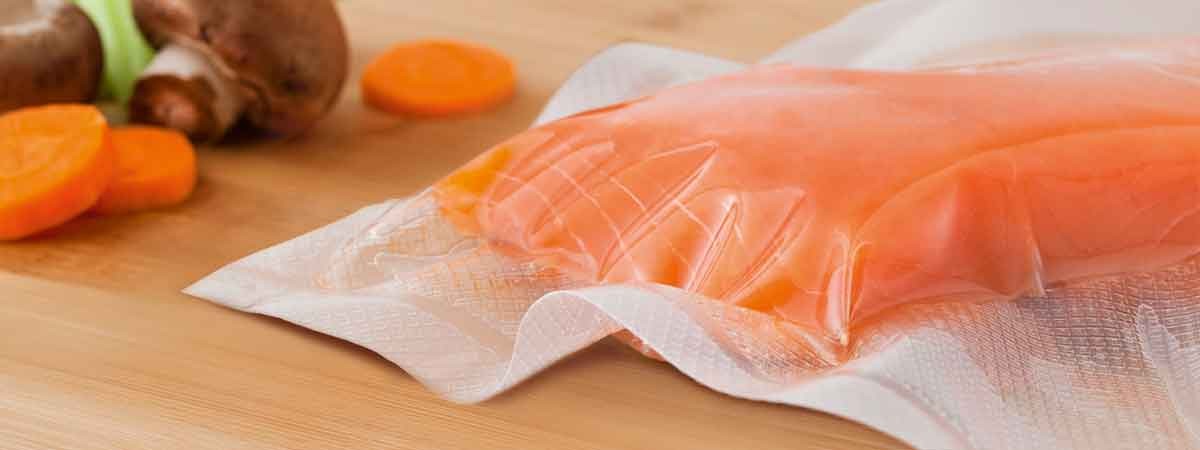Vacuum packaging has taken the preservation of foodstuffs to the next level and is helping to feed the world's population.
Efforts to develop means of food preservation date back to the earliest times: Drying, curing, pickling in vinegar or honey and smoking are traditional methods, some of which have been used for thousands of years. More recently, resourceful inventors succeeded in enclosing food in tin cans or preserving it in glass jars. Yet all these methods have their disadvantages. Some alter the consistency or taste of the processed goods, while chilled food requires an unbroken cooling chain and a constant energy supply.
The preserving effect of vacuum packaging is largely based on the removal of air and the moisture contained in the air. Most bacteria and mould are unable to thrive without oxygen and moisture. The vacuum thus makes an important contribution to overall hygiene by preventing the growth of bacteria in these goods. Similar advantages are offered by modified atmosphere packaging (MAP). With this technique, the packaging is generally filled with inert gases such as nitrogen and carbon dioxide, which also keep the goods dry and prevent the growth of micro-organisms. As in the case of vacuum packaging, the air contained in the packaging is removed before the inert gas is added. The Food and Agriculture Organization of the United Nations (FAO) lists vacuum packaging and modified atmosphere packaging (MAP) as important methods for preventing the spoilage of foodstuffs.
Meat, cheese, coffee
The packaging materials usually take the form of films made from polyamide or polyethylene, as well as composite films. They are gas-tight and offer durable MAP and vacuum-based storage. Among the first products to be vacuum-packed were cheese, sausage and meat products. Vacuum packaging has since established itself as the recognized standard in this area.
The distribution of ground coffee would not have been possible without vacuum packaging. This is because coffee beans are characterized by the fragility of their taste. Even when unground, the beans lose their aroma over time, are altered by oxidation and very quickly absorb moisture and extraneous odours. And all these effects are exacerbated when the coffee is ground. Vacuum packaging retains the flavour of the coffee and ensures lasting quality of the ground beans. Thanks to its numerous advantages, it is gradually taking over more and more areas of the food industry.
Onset of vacuum packaging
The concept of vacuum packaging first appeared around 1960. However, the vacuum technology available at the time did not suit the particular requirements of the packaging industry. The vacuum pumps were simply too large and inflexible. Dr Karl Busch recognized this shortcoming and, in 1963, developed the ‘Huckepack' rotary vane vacuum pump specifically for this application. It could be mounted on the packaging machine and delivered the necessary vacuum with the required speed and reliability. It was soon followed by the compact R5, which manufacturers were able to install directly in their packaging machines. The R5 signalled the start of the vacuum packaging success story. To this day, it remains the most frequently used vacuum pump in the food packaging industry.
